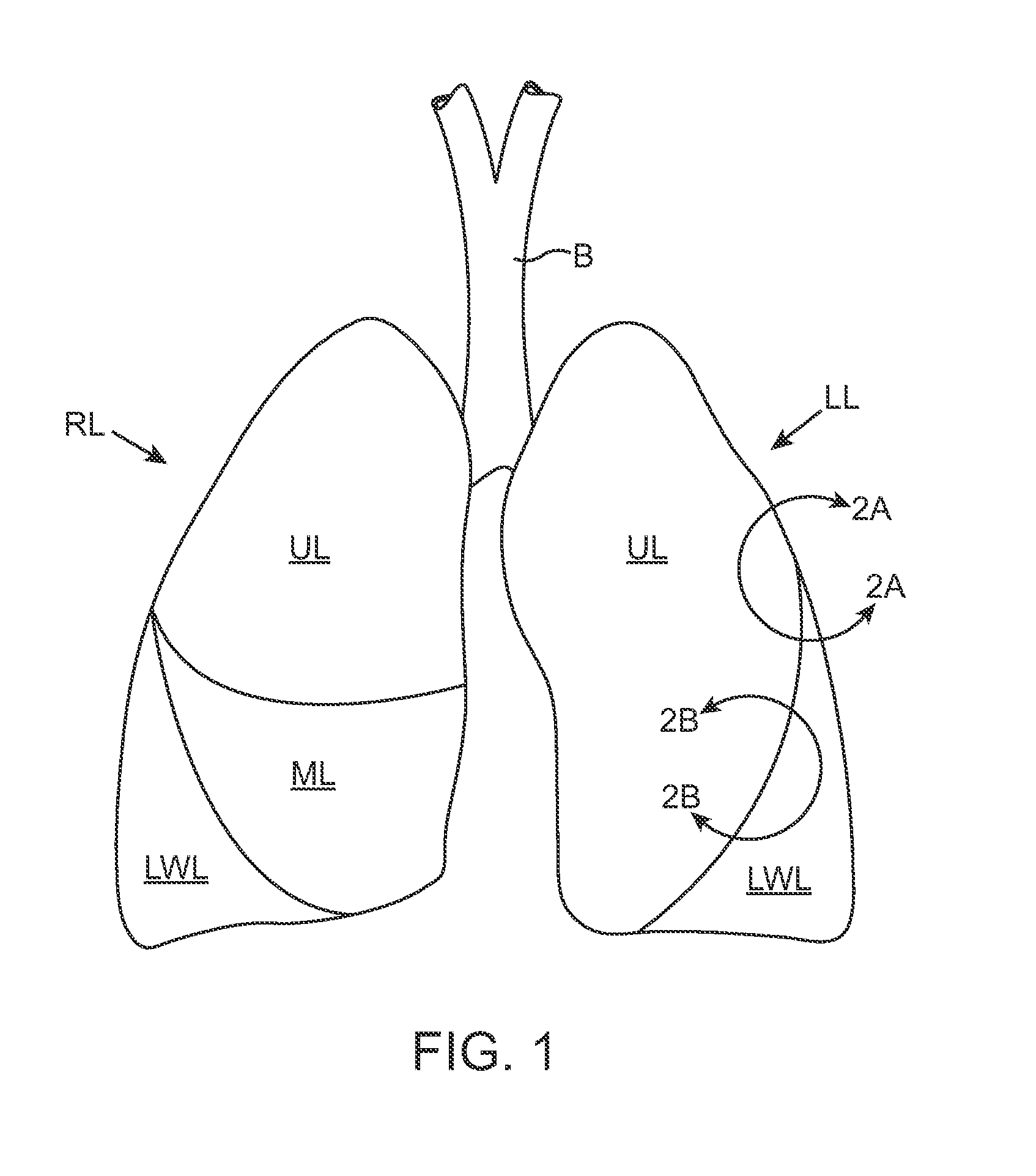Collateral pathway treatment using agent entrained by aspiration flow current
a technology of aspiration flow current and agent, which is applied in the field of performing catheter-based diagnostic or therapeutic procedures within the lung, can solve the problems of affecting lung function, affecting lung function, and affecting lung function,
- Summary
- Abstract
- Description
- Claims
- Application Information
AI Technical Summary
Problems solved by technology
Method used
Image
Examples
first embodiment
[0020] Referring to FIGS. 3A-3D, the invention is described. The lung area targeted for therapy is first isolated with a balloon catheter 10 (FIG. 3A), henceforth referred to as the aspiration catheter, which is inserted through the mouth and the main bronchus B and into the tracheobronchial tree, optionally using a bronchoscope or other delivery tube or sheath (not shown). The target lung area can be in the lobar bronchus, the segmental bronchus or even deeper into the bronchial tree, depending on what the needs of the therapy are and where the targeted lung bronchopulmonary compartment, henceforth referred to as the target lung region (TLR), is located. Isolation is created usually by inflating a balloon or cuff 12 at the tip of the catheter which seals the annular space between the catheter and the bronchus wall. A lumen extends the length of the catheter providing access to the targeted lung region (TLR). The proximal end of the catheter 10 outside the patient's body is coupled ...
second embodiment
[0030] In the present invention, a method and devices are disclosed in which the agent that is delivered is designed to have a state change or undergo chemical alteration after being deposited in the collateral pathway. The state change allows the agent to be delivered in a highly particalized small state in order to maximize time-of-flight and penetration into the collateral pathways. Once deposited, the agent can change to a less particalized state with sufficient persistence to stay at the site of deposition. For example, typical sizes of the particles in the particulate state can have molecular weights of 100-500 Daltons versus molecular weights of 100-1,000 KDa in an agglomerated or coalesced state. The larger size would immoblize the agent onto the host tissue to resistant migration. The particles in the delivered state may also be hydrophobic or lubricious or very light in viscosity and generally highly un-reactive with like particles in order to maximize penetration into the...
PUM
 Login to View More
Login to View More Abstract
Description
Claims
Application Information
 Login to View More
Login to View More - R&D
- Intellectual Property
- Life Sciences
- Materials
- Tech Scout
- Unparalleled Data Quality
- Higher Quality Content
- 60% Fewer Hallucinations
Browse by: Latest US Patents, China's latest patents, Technical Efficacy Thesaurus, Application Domain, Technology Topic, Popular Technical Reports.
© 2025 PatSnap. All rights reserved.Legal|Privacy policy|Modern Slavery Act Transparency Statement|Sitemap|About US| Contact US: help@patsnap.com



